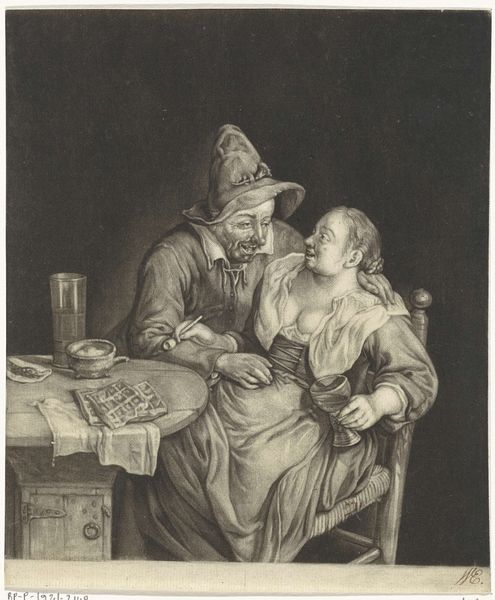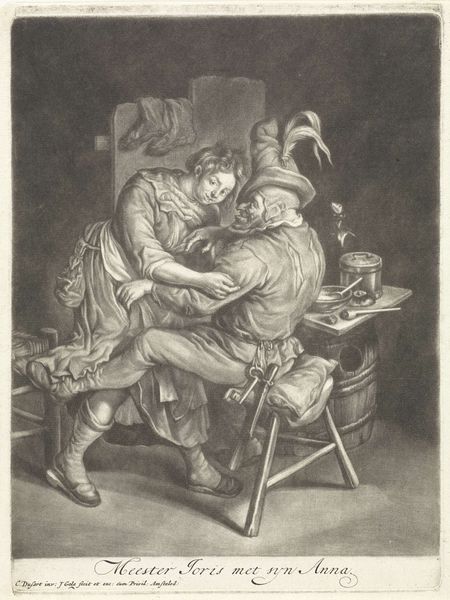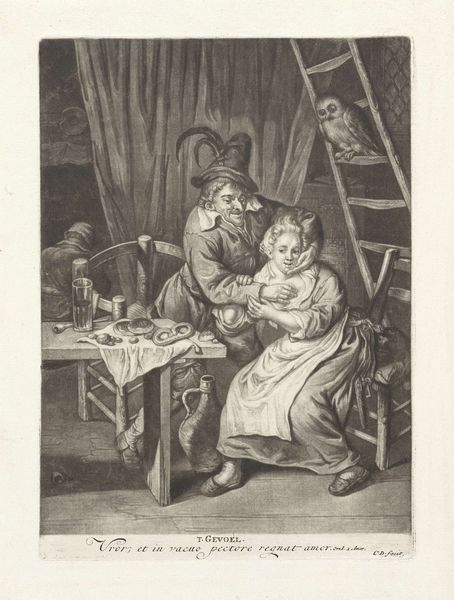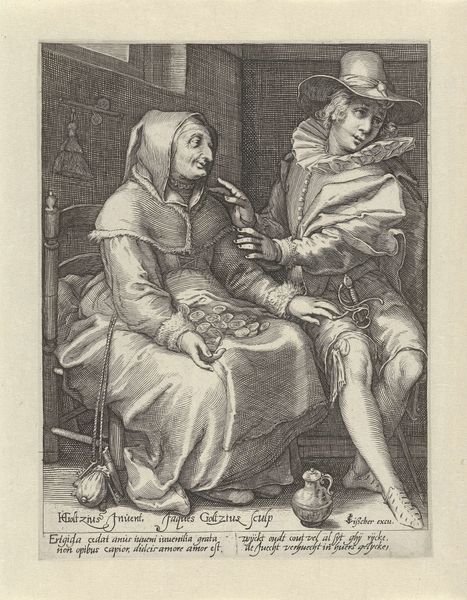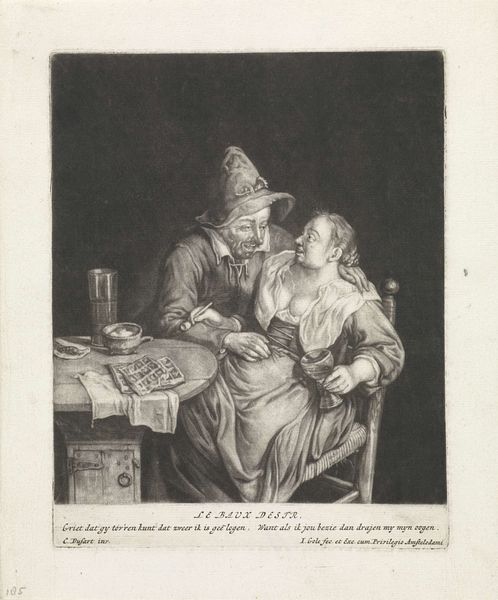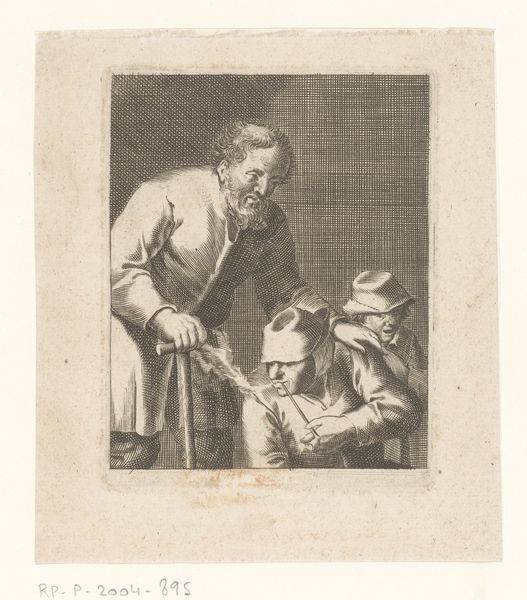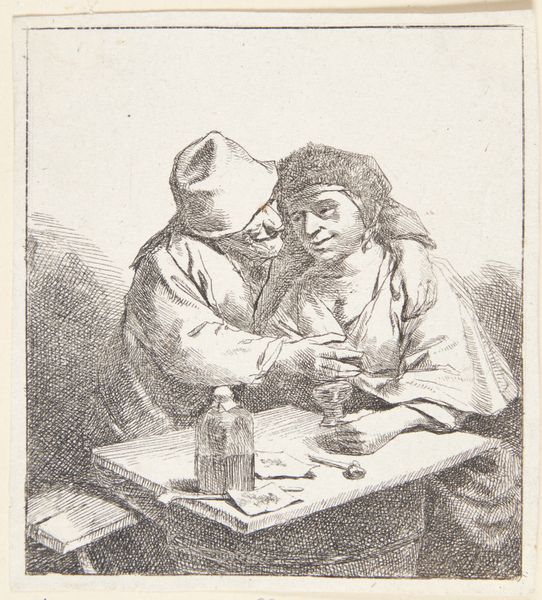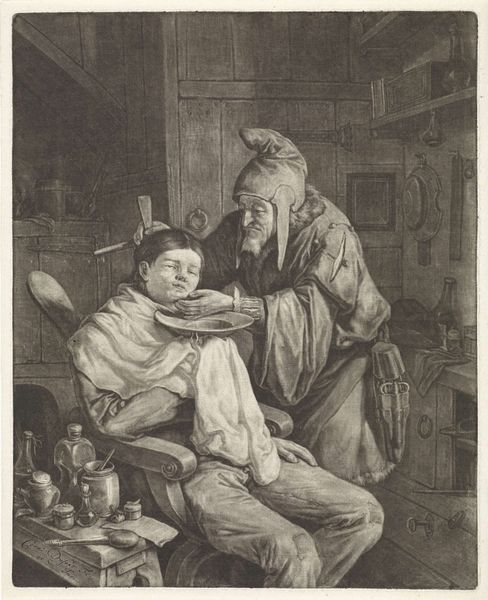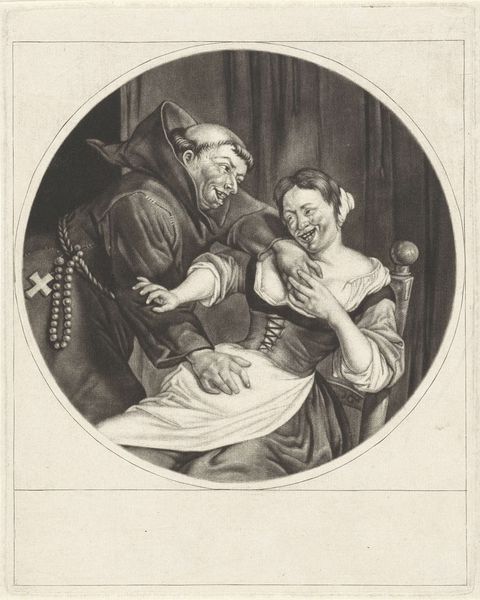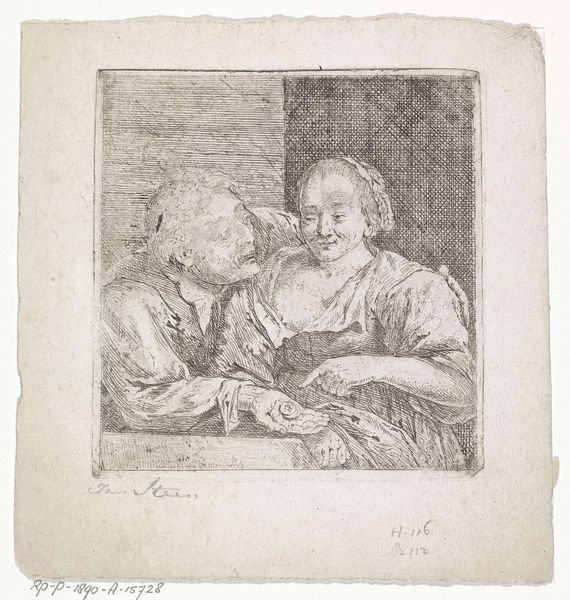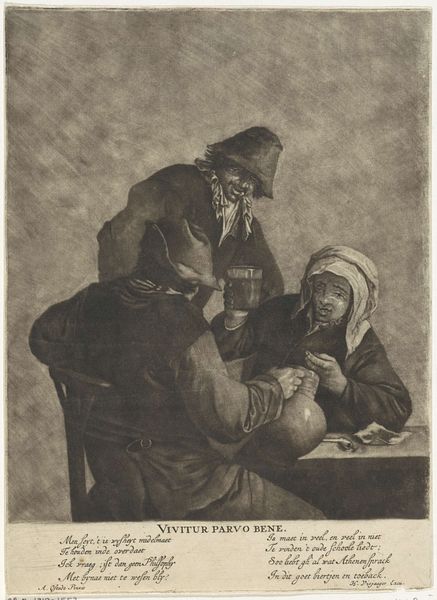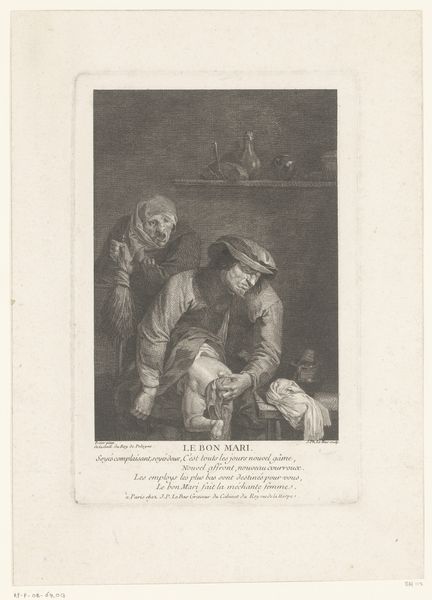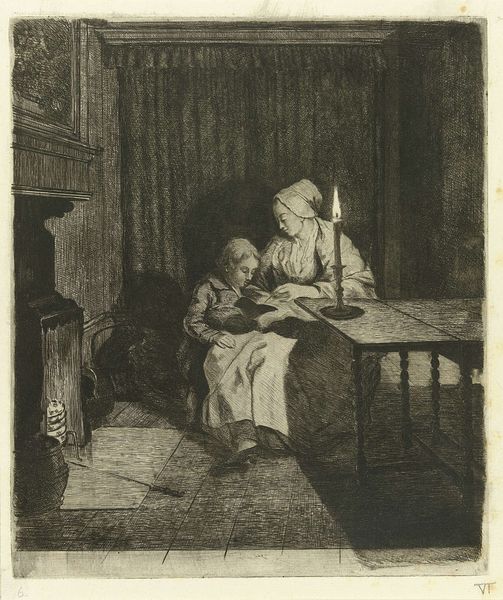
print, etching
#
portrait
#
dutch-golden-age
# print
#
etching
#
figuration
#
genre-painting
#
realism
Dimensions: height 186 mm, width 141 mm
Copyright: Rijks Museum: Open Domain
Editor: Here we have Cornelis Dusart's "Boer en boerin," created in 1685. It's an etching, a print. There's a simplicity to it, a sense of everyday life. What strikes me most is how the material of the etching gives such texture to what seems like a simple scene of a farmer and his wife. What do you see in this piece? Curator: Beyond the representational aspect, let's consider the material conditions that brought this print into being. Etching, as a process, allowed for relatively widespread reproduction, taking images and, crucially, ideas, to a broader audience. Dusart’s choice to depict these figures—likely from the lower echelons of Dutch society—raises questions about his target audience and the potential consumption of this image. Why print this? Editor: I guess because prints are so reproducible, this was available to the wider population instead of restricted to wealthier people who had access to paintings? Curator: Precisely! We need to think about this artwork as a commodity. The ink, the paper, the labor of the printmaker… it all speaks to the social and economic factors surrounding art production. Is Dusart glorifying rural life or merely observing a social underclass, packaging that observation for urban consumers? Consider, too, the tools used and the very labor embedded within this piece. What does the labor perspective contribute to our understanding? Editor: I never thought about how the artist was providing the picture in the caption. I thought of him as being separate from the subjects. I didn't even consider his economic background. This changes how I view these older works completely. Curator: Thinking about art as labor, as a commodity, opens up entirely new avenues of interpretation. We move beyond just what is depicted to how and why it was made available for circulation. Editor: Right. It's not just about the farmer and his wife; it's about the means of making and distribution.
Comments
No comments
Be the first to comment and join the conversation on the ultimate creative platform.
